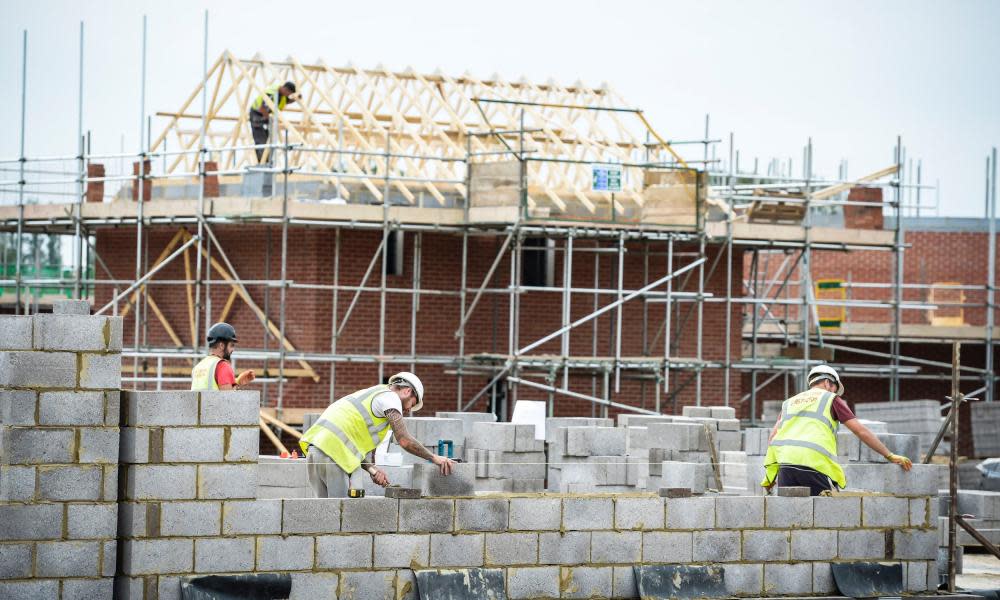Disastrous effects of Tory right-to-buy policies | Letters

Peter Hetherington puts forward a practical analysis of the sins currently besetting the construction of houses in Britain (The housing market needs a radical model, 1 March) but fails to expose the right-to-buy scandal for what it is: political bribery for easy Conservative votes.
For over 35 years successive Conservative governments have forced the sales of local authority houses they did not own to sitting tenants, with huge discounts on the real value of the properties coupled with only a few years’ ban on resale before the purchasers could put them back on the market at their full value. In a significant number of cases the children of tenants lent their parents the money to facilitate the purchase knowing that in due course they would inherit a large capital windfall. Significantly, today some 40% of former council houses are being rented out by their owners.
The present government, instead of being ashamed of this cynical right-to-buy policy, wishes to extend it to housing association properties – again not owned by the government. As Hetherington points out, it is “hardly an incentive to build for the neediest”. If there was a government incentive for local authorities and housing associations to sell their houses by providing funds for discounts only for properties on difficult and hard-to-let estates, with the rest being offered at full market value, possibly with council mortgages, this would be an equitable and positive market policy that would not inhibit more housebuilding.
Michael Meadowcroft
Leeds
• I was interested to read that Durham and Sunderland are two of the country’s more affordable cities (Financial, 25 February). I would urge readers to consider the knock-on effects, not necessarily for the people living in the cities but those in the surrounding villages of the old east Durham coalfield. It is not just about the cost of housing but everything else that goes with it.
We recently sold my father’s respectable three-bedroomed house (built for the staff of the Co-op stores which dominated the villages until the 1970s) for the princely sum of £52,000, and not without difficulty. I cannot help but contrast the opportunities now available with those that my school friends and I from the colliery villages enjoyed in the 1960s, with free education and house prices not at such extremes. Six of us went into higher education. We had children who have qualified in medicine or studied at Oxbridge – a real example of social mobility. Today, besides the disincentive of the rocketing cost of higher education, we would have insufficient equity in our homes to even contemplate moving elsewhere in Britain.
Pam Ward
Nottingham
• In the February edition of The Westminster Reporter magazine, put out by Westminster city council, Cllr Robert Davis asks local residents to get behind great architecture in “the People’s Choice Awards”. These big, shiny buildings, many of which are likely to be underused for a long time, are a distraction from the chronic affordable homes crisis that is destroying the social structure of the city. Westminster has the most rough sleepers in the country, possibly up to 300 at any time. It also has over 2,500 families in temporary accommodation, about half of whom have been exiled to other parts of the UK, away from family, friends and support networks. These buildings will do nothing to address this reality.
The awards are a sideshow, Bob. The people and families of Westminster need truly affordable homes to live in, not trinkets and baubles they can only stare at.
Paul Heasman
London
• Ten Labour and eight Liberal Democrat councillors will attempt on 2 March to force a reconsideration of Haringey council’s proposed deal with Lendlease, a private international property development company. It is a crunch moment when the global economy hits the local community. The outcome will either restore local democracy or impose global tyranny. The council’s cabinet decided on 14 February to make Lendlease the preferred partner in a public-private development vehicle which will take over £2bn in council assets. It is unethical, and it ought to be unlawful, for any local authority to hand council assets to any company with an office registered in the Channel Islands, and which has recently paid $56m (£45m) in the US to avoid prosecution for corruption. Council tax payers, which includes all the unemployed residents, and up to 15,000 council tenants or leaseholders, of Haringey are struggling to restore local democracy in north London.
Rev Paul Nicolson
Tottenham, north London
• Subsidising buyers to afford homes that would otherwise be out of their reach merely ensures inflation is given a continuous boost and undermines attempts to get to grips with the need for affordable houses. Defining those as up to 80% of local open market prices means that they are being rapidly rendered unaffordable.
The largest building firms identified numerous defects and bottlenecks at a meeting over two years ago with the then chancellor, George Osborne, and his housing ministers: lack of skilled labour, contributed to by inadequate training facilities; failure to use modern methods and machinery; and reliance on increasingly expensive foreign sources of materials. All these are holding back output and pushing up costs. Indeed, the builders complained that theirs was an “inelastic industry”, incapable of raising production by more than 5-10% annually, and that a national target of 200,000 homes a year was “wild”.
Switching financial support to making good these deficiencies by channelling funds directly to the builders will stabilise costs and then steadily bring them down. Local authority building departments should also be re-created. After all, when we were putting up well over 200,000 houses a year, councils and housing associations provided around half of them.
Harvey Cole
Winchester, Hampshire


